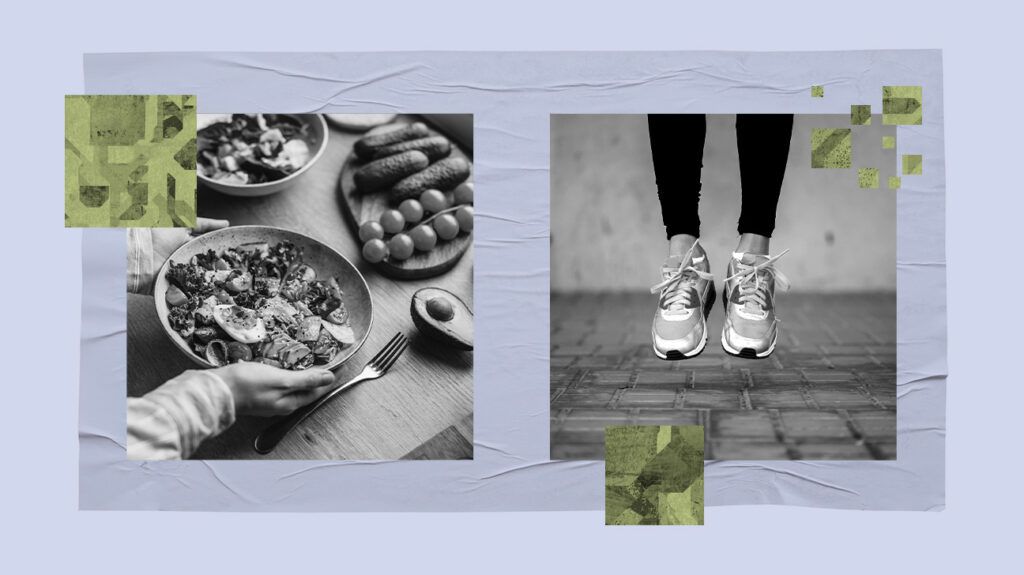A recent BMC Public Health study analyzes self-monitoring data from Chinese adults who participated in a group weight loss intervention using a mixed-methods approach.
 Study: Why more successful? An analysis of participants' self-monitoring data in an online weight loss intervention. Image Credit: Ground Picture / Shutterstock.com
Study: Why more successful? An analysis of participants' self-monitoring data in an online weight loss intervention. Image Credit: Ground Picture / Shutterstock.com
Background
According to the World Health Organization (WHO), over 1.9 billion adults were overweight in 2016. This global public health problem has reached alarming proportions in China, which significantly increases the risks of several diseases, including cancer, diabetes, and cardiovascular diseases.
Self-monitoring, which enhances self-awareness, promotes desired behaviors, and reduces unwarranted behaviors, can be achieved through setting specific targets and logging progress. Changes in body weight, exercise, and dietary intake are regularly monitored by participants of weight loss interventions. In fact, obese individuals who periodically monitor their diet and body weight have experienced more beneficial responses to interventions.
Researchers have both quantitatively and qualitatively analyzed the self-monitoring behaviors of dieters; however, few have utilized a mixed-methods approach for this purpose. Notable advantages of the mixed-methods approach include its ability to elucidate the association between weight loss and different self-monitoring indicators and reduce bias to ultimately develop reliable insights into self-monitoring.
About the study
Self-monitoring data from 61 Chinese adults who participated in a five-week online weight loss intervention group were analyzed in the current study. In addition to providing information on their weight loss motivation and body mass index (BMI) values, the study participants also engaged in daily quantitative monitoring, which included parameters like caloric intake and sedentary behavior, as well as qualitative self-monitoring, which involved a daily log of weight loss progress.
A scoring rule assessed the timeliness of the data. A one-way repeated measurement ANOVA was used to analyze the dynamics of self-monitoring indicators.
Regression and correlation analyses were performed to explore the relationship between weight change, self-monitoring indicators, and baseline data. Participants were grouped into three categories based on their weight loss outcomes, and their qualitative data was assessed using content analysis.
Key findings
Some fluctuation in self-monitoring data was observed throughout the intervention. Furthermore, some baseline characteristics of participants and self-monitoring behaviors were positively associated with their final weight loss outcomes. Across the weight loss categories, heterogeneity in qualitative self-monitoring data was observed.
During the weight loss process, a gradual decrease in caloric intake was observed, thus suggesting the learning behavior among participants. During the last week, participants exhibited some variation in commitment levels, which led to concerns about a rebound in caloric intake.
Weight loss satisfaction was highest in the first week and gradually declined. This decline in satisfaction was consistent with their weight loss, highlighting the link between effort and outcome.
Weight loss motivation, baseline BMI, and timeliness of daily self-monitoring data completion predicted final weight loss. The relationship between weight loss, daily physical activity expenditure, and daily caloric intake was insignificant. Furthermore, no significant relationship was observed between weight loss and daily mood.
The qualitative analysis of participants' daily logs revealed four categories: eating behavior, weight loss awareness, physical activity, and perception of change, the latter of which was most frequently mentioned. This was followed by the mention of weight loss awareness, eating behavior, and physical activity.
Inconsistencies were noted in the probability distribution of participants' daily log frequencies. Poor and moderate weight loss groups reported lower observed frequencies across all four categories than the excellent group. The excellent group reported a higher frequency of adjustments in eating habits, self-awareness, disadvantages, and demonstrating greater patience.
Conclusions
An inconsistent pattern in the self-monitoring behavior among individuals undergoing a group weight loss intervention was observed. More specifically, a higher level of self-monitoring was identified during the initial weeks of weight loss, followed by a slow decline.
More significant weight loss was attained by individuals with higher levels of motivation, higher baseline BMI, and those who regularly self-monitored. Furthermore, more detailed and frequent content was reported in the texts submitted by successful participants.
These findings imply that weight loss motivation and adherence to self-monitoring should be emphasized. The use of digital technologies could be beneficial, as they could facilitate greater weight loss awareness and promote healthy dietary habits.
In the future, more studies with larger sample sizes and precise measurement tools are needed to evaluate daily calorie expenditure and intake.
Originally Posted On:https://www.news-medical.net/news/20240201/How-self-monitoring-and-motivation-fuel-online-weight-loss-success.aspx
- Tang, H., Jalil, N. I. B. A., Tan, C., et al. (2024) Why more successful? An analysis of participants’ self-monitoring data in an online weight loss intervention. BMC Public Health 24; 322. doi:10.1186/s12889-024-17848-9, https://bmcpublichealth.biomedcentral.com/articles/10.1186/s12889-024-17848-9
